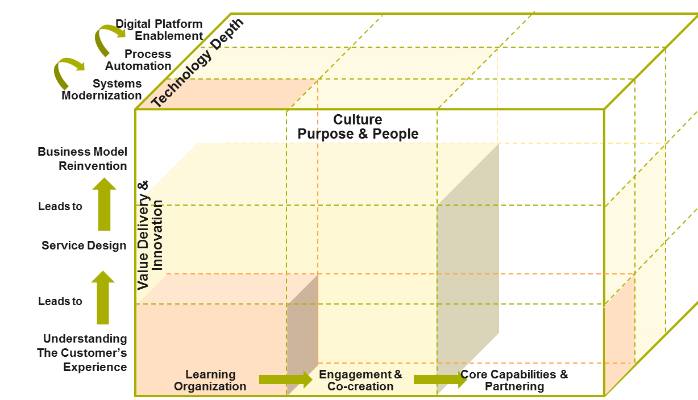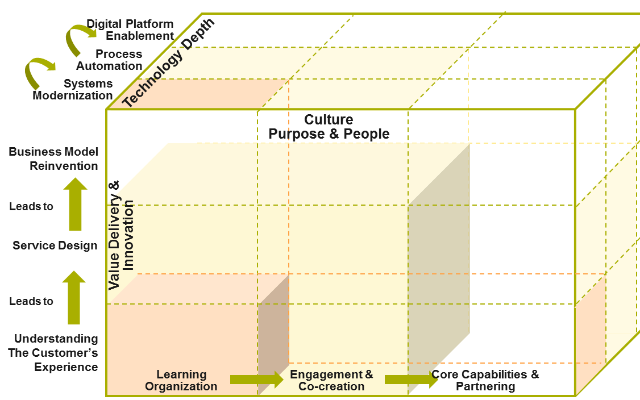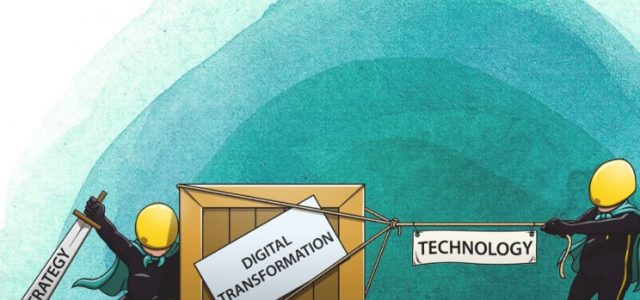Some of the recent comments on our review of McKinsey’s survey on business transformation got us thinking. And if you’ve been following our regular blogs around Transformation and Organizational Change, you’ll see it is something we have touched on before. What does the term “transformation” really mean in a business context, and what’s an appropriate use of the term? Why do we get so much alleged transformation failure (our own research paints a different picture from McKinsey)? And given the risks, why would your organization want to go down this path?
Organizations are still trying to figure out how to transform as they struggle to meet the ever-changing expectations’ of their customers, and begin the process of rationalizing their businesses and technology infrastructure. They want a roadmap—one that delivers the revolutionary benefits of transformation but without the risks. Instead, firms need to find an evolutionary path—a pragmatic set of steps and approaches that help the organization and its employees develop the skills and competenci es they need for the journey ahead.
es they need for the journey ahead.
So what does it really take to make a change initiative transformational? What about your change projects—do they move the needle for the customer? Or are they about fixing the past; fighting fires, or smoothing the path and reducing costs but doing nothing for the value delivered? If you were a customer—would you really notice the difference in the outcomes you receive? Would your experience and relationship be transformed? Would this turn you into a fan of the brand?
Transformation Defined
We define business transformation quite simply:
“Being prepared to change everything you do; but most importantly how you think.” [1]
Business transformation is a response to the discontinuities and disruptions caused by technology and market changes on the business; others have changed and moved the competitive goal posts. Successful transformation means changing how you think about:
- Value delivery and innovation. Every organization has to reinvent itself! Otherwise, sooner or later, it will cease to exist. Here the focus is on how the organization innovates—its value delivery model, even its role within society and how it engages customers and collaborators. The journey begins with focusing on understanding the needs of customers outside-in—moving from products to services—and ends with reinvention of the organizational value proposition. We take “business as usual” (BaU) as our “zero-point.” If there no change in the outcomes delivered to customers, then the transformation label is probably inappropriate.
- Organizational culture, purpose and people. Here the emphasis is on the organization’s culture and architecture—its functions, processes and business practices. When you move past the zero-point of reshuffling the deck chairs, the change initiative needs to start grappling with how the enterprise truly learns about the needs of its customers and the actions of competitors. It moves on to exploring its primary capabilities and the resources deployed (or sourced externally) in support of them. Most importantly, it means moving from change imposed through command and control, to employee engagement and co-creation. By engaging employees into designing the future, it becomes their Ultimately, transformation implies rethinking the functional, hierarchical structures moving toward configurable business components in support of a core set of well-defined enterprise capabilities. Non-core (utility) capabilities are typically supported by key partners who have the necessary focus, scale and resources.
- Technology and its ability to support and enable the great customer experiences and value delivery. For most organizations, this begins with modernizing the patchwork quilt of technology systems underpinning the organization; building a robust infrastructure and componentizing the core elements of functionality needed for customer success. With that in place, process automation becomes a natural next step before embedding modern technology—cloud connected, mobile accessible apps—to engage customers anytime and anyplace, enabling a compelling value proposition that others struggle to match. There are a great many nuances involved in that last phase—what many have called “Digital Transformation.”
Moreover, there is an inextricable and dynamic link between these three dimensions. Any missteps in one area will significantly impact the other two. Secondly, move too far on one dimension without giving sufficient attention to the other two, and the initiative becomes lopsided. Clearly, a holistic perspective is needed as there are many challenging levers to pull and coordinate. It is the act of working all three areas together that makes for long-term, sustainable success.
Why Transform?
With so many moving parts and a general lack of predictability, some might wonder why an organization would want to go down this road. Of course, there are many potential reasons—severe market adjustment, regulatory change, competitor actions, ever increasing customer expectations, and broader disruptive market trends. Some large organizations struggle to drive growth that meet investor expectations and think they need to cut costs dramatically. Others may need to tackle a malaise surrounding their inability to innovate.
Key Challenges On The Transformational Journey?
Yet the proficiency of leaders in navigating the choppy waters of change is usually governed by their vision and soft skills—what they see in the distance and how they bring people along—rather than an ability to follow closely some “best-laid plans.”
The key questions:
Do your organizational leaders see and understand the holistic challenges ahead?
Do they have the courage and conviction to drive the firm through a visceral and gut wrenching and difficult journey?
Are they prepared to change their behavior?
Or are your leaders applying the same old tactics, yet this time, somehow, they’re expecting different results.[2]
The point is that, if you are not prepared to rethink how you deliver value outside-in—if it’s all based on a “Tell-Sell” mentality with no real engagement or co-creation, people will nod at the right times and send along a representative to your meetings, but the initiative probably won’t deliver sustainable benefits you seek.
Two key points emerge:
- Executives cannot abrogate responsibility for change. In the end, transformation is not something you can outsource to an external consulting firm or design agency. It’s critically important to root the initiative in the organization itself, with shared ownership and accountability at the senior executive level. Sure, external providers can provide additional resources—but the organization itself has to own the journey and the craft/adapt the methods that will drive success.
- It is the journey itself that transforms. Once you’ve decided to move past token cost cutting measures and endless reorganizations you’re now taking the first real steps towards a more sustainable future. While many will look for an opportunity to jump straight to the end state, bypassing all the learning and shared experiences along the way, the reality is that is just not possible. Transformation initiatives are much like dealing with a wicked problem—it’s the conversation and inquiry into that problem that drives understanding; which in turn informs the change efforts. You have to start with the end in mind—the objective of having a vision is to set the goal in the distance, the path you are taking to get there will inevitably change many times.[3]
Like peeling an onion, you have to take one layer at a time.
Undertaking a Business Transformation initiative is a spiral journey—moving around the dimensions we’ve set out—keeping everything aligned.
[1] This phrasing we attribute to Andrew Tinney who, at the time, was COO of Barclays Wealth.
[2] Don’t kid yourselves—an organization cannot outperform the constraints of its leadership. Most problems and challenges emanate from the silos and the fiefdoms, which in turn, are controlled by powerful personalities who’re often quite happy with their status in the organization.
[3] On a trip to New York from London, you buy the ticket to the destination; but on the journey, the plane itself is will change its direction many times.
Article by channel:
Everything you need to know about Digital Transformation
The best articles, news and events direct to your inbox
Read more articles tagged: Featured






